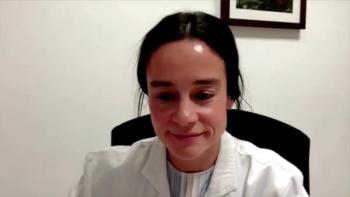
Removing Barriers to Biomarker Testing Is Good for Patient Outcomes and Finances
Although the cost of biomarker testing isn’t cheap, the cost of therapy for patients can be much higher, making it important to conduct these tests to start the right therapy, explained Susan Wescott, RPh, MBA, of Mayo Clinic.
Biomarker testing in oncology isn’t happening enough, and there are a number of reasons why that may be, said Susan Wescott, RPh, MBA, senior director of managed care pharmacy, Mayo Clinic. Removing some of the barriers might not make much of a difference, but others, such as prior authorizations, can give patients a much better chance at survival.
Wescott discussed precision medicine and biomarker-driven oncology care during a session at
This transcript has been lightly edited for clarity.
Transcript
How often is biomarker testing being done in oncology and what are the barriers to it being done?
We looked at evidence this morning, for example, that showed only 36% of our patients are receiving the right treatment driven by precision medicine. So, getting that test ordered, done, and then using those results to drive the choice of therapy. We do have a lot of opportunity, though, to increase that number of patients by doing a couple of things. Those include making sure that testing is ordered before therapy is started. Also, maybe teaching our prescribers and our patients why it's important to wait and what the consequences are if you don't wait.
The impact is pretty significant. It's really worth waiting to do that. If there is an urgency to start treatment, there are some options there, like using a platinum doublet, for example. We can do something like that without harming the long-term overall survival of patients.
So, what are the barriers for us just getting there today? I think there's quite a few, and it's everything from sometimes patients aren't being referred to get a biopsy in the first place. That's a really small number of patients, and could we move that needle? Probably not, because there may be some important reasons why they're not going there. For example, they're too sick. Their cancer is too advanced. Maybe a liquid biopsy in those patients would add some information and help us make a better treatment decision. But moving through the stages of testing, sometimes there's not enough test sample available in the biopsy or there are problems with the lab.
But there are things that we can do, barriers that we can remove. One of those would be, prior authorization is sometimes in place where the genetic testing itself. If we were to remove that, if we made that one change, I think that we would give all of our non–small cell lung cancer patients, for example, a better chance of survival right away, by just doing that one thing. It does seem like there should be a prior authorization, the way we used to think, because some of these tests are up to $5000. And that's a lot of money. But if we look at the cost of therapy and the overall cost of care in these patients—drug therapy is $150,000 or more per year—choosing the right therapy really makes a lot of sense, financially.
Newsletter
Stay ahead of policy, cost, and value—subscribe to AJMC for expert insights at the intersection of clinical care and health economics.







































